In my article The Tau of Vladimir Putin, which received some attention on the Internet, I argued that Putin's mindset is essentially oriental rather than Western, perhaps as a result of his training in the martial arts, including Judo.
To understand, Putin’s strategy in the Ukraine –and against the Western Collective-- you have to understand how he is influenced by the martial arts, which he took up as a defense against bullying.
Yes, the Collective West are now the bullies. And Putin doesn’t like bullies.
The “Way”
Judo, like many Japanese and Chinese martial arts, is a "way" —a "Do"—a path to wisdom. It reflects the philosophy of its founder, Jigoro Kano.
Just as Aikido reflects the philosophy of Morihei Ueshiba…
And Shorinji Kempo expresses that of Doshin So.
I studied all three of these so-called “martial arts”. Probably the worst student ever.
The Zen Thing
That said, most of these are really Zen disciplines. You do not study to fight-- but to find enlightenment.
I wasn’t enlightened either. So I fail on all counts.
These arts are not definitely taught for streetlighting or victory in combat or military applications but (ideally) to develop the moral strength not to fight. That even includes the modern versions of ninjitsu!
Today’s Japanese martial arts emphasize defense which can provide an advantage in terms of avoiding harm—both to yourself and to others. Not a guarantee. Just an edge.
They also give you an edge in offense. Before you can go on the offense, you must think defense.
So it was tjhat Bruce Lee studied judo for two years on arrival in the US and it greatly influenced his development of Jeet Kune Do.
Russia thinks defense first; the Ukraine, obviously offense first—and also last. A mistake.
Origins
Almost everyone who takes up Judo, as Putin did, is curious about its origins in Jujitsu (variously spelled in English) which in its various original forms were techniques (not a “way”) taught to the samurai for hand-to-hand combat-- in which the goal was to inflict injury or kill.
Kano distilled purely defensive techniques, throws, various locks, and demobilization techniques as a form of physical and mental training for young people. He did not teach what is now known as “goshin jujitsu” ( combat jujutsu) –the various fighting techniques in which he was proficient, which which included ways of breaking bones and killing people .
Putin’s martial arts
Putin studied Judo –but also Combat Sambo which is the Russian equivalent of Goshin —or. if you like,a kind of Russian Krav Maga / karate/ jujutsu-- formalized streetfighting.
It has kicks, punching, locks, chokes, throws, grappling, pretty much everything.
So he's familiar with two martial arts, one with rules which teaches you to avoid conflict-- the other which teaches you to fight and win by any means necessary.
Judo by itself, however, can used effectively in a street fight if you understand the nature of street fights, which are all different but have certain things in common. Namely, no rules. In that case, a little Judo goes a long way.
Street fighters like to strike first- And strike hard – to punch or kick They may also use weapons. A concealed knife? They like an advantage. They like people who can’t fight back. You must have experienced some of these things.
If your are a Judoist you will first try to walk away. Or prepare… Like this.
This is a perfect defensive stance. One hand close to face — to block a strike at the head; the other hand lower down to counter blows to the middle. No direct eye contact, but watching from the corner of the eyes. Never watch the eyes: watch the body.
If you cannot get away, it is smart to first keep distance if you have space to do so - which will encourage your enemy to show a weapon if they have it. You cannot defend against a hidden weapon.
Judgment
Distance also gives you an opportunity and perspective to judge how they're going to attack.
It is always best to to look like you don't want trouble or lack the ability to defend yourself. Make them over-confident. They are going to attack no matter what. You don’t want them calling friends for backup.
In other words, you encourage your opponent to do stupid things.
However, they attack, you should not respond the same way.
They will almost always attack in a straight line.
Think holistically
But….you will move in circles. They focus on one point-- normally the point they want to hit – where they think you are vulnerable. You focus on the person, multiple points and their movements as a whole—holistically.
You see how this works in the Ukraine?
To throw someone in Judo or Jujitsu you have to be in close, and you have to use their momentum against them, or catch them off balance. So, in fact, you want them coming at you hard.
Again, does this remind you of the Ukraine.
While hitting the pavement hard, knocks the wind out of an assailant they can often still get up and fight-- so you have to know how to keep them down-- if possible without going to the ground yourself.
That's where some knowledge of a more aggressive martial art comes into play.
Balance — within and without
What about constrained spaces – like a bar, for example, when someone grabs you?
Emotional balance helps.
You still have advantages, since they cannot punch or kick effectively when you are close, whereas you can throw.
In Kempo, we are taught to flick at the eyes—your opponent will reflexively release his grip.
For you to deal with any attack effectively, your opponent has to be
a.) off balance
b.) overconfident—both, often the case if they are bigger and stronger.
In other words, strategy makes the difference. But strategy and tactics depend on awareness and creativity.
Adapt.
Just like the Russians do.
Examples
Let me give you an example.
I took up karate for a while. My teacher taught Shotokan but he was also an Aikido-ist and taught a form of Goshin Jiujitsu.
In this school, it was common practice to match two or even three white belts against a colored belt-- say, green or brown. Melee practice.
As a novice, I first watched my colored belt finish off the other white belt in just seconds before turning to me.
There was no way I could compete in punching or kicking –he was trained – and faster and stronger. I still won. He attacked straight on. I circled, and swept his foot with a judo move using his momentum . He fell.
Didn’t work on my next opponent, a black belt candidate who had seen this and simply kicked me in the throat with a reverse kick, using distance to his advantage! Then he would have won no matter what I did.
Good martial artists observe and learn. I was never a good martial artist. Clumsy, uncoordinated. Whenever I was successful, it was mostly luck and doing something unexpected. And naturally I avoided real fights. Martial artist? Nah. Martial Wimp.
But keep in mind that in a street fight a kick to the throat will often be fatal so you end up in prison for manslaughter-- unless of course they have a weapon. Proportionate response is important.
In any kind of social environment, defense involves the least harm to both attacker and defender.
The Russians try to avoid casualties.
Russian Rules
a.) Moral superiority.
Maintain moral superiority at all points. Defense does not mean wholesale slaughter, destruction, and conquest. Be willing to talk. Especially after everything is over.
Putin did not invade Ukraine. He intervened to assist newly independent republics defend themselves against genocide-- with the force of only 90,000 against 400,000!
After basically winning on the battlefield in the first couple of months. Putin sat down to talk in Istanbul and and offered the Ukrainians a deal-- perhaps knowing they would renege.
But the deal allowed him to redeploy from Kiev leaving minimal forces in Kharkov .
b.) Strategic positioning
In the case of an implacable and/ or crazy enemy, allow the enemy to position themselves for full-scale linear but uncoordinated attacks which expend energy (resources) and reduce strategic flexibility (over commitment to limited goals like Kursk).
That means positioning yourself for strategically.
The Ukrainians had expended huge amounts of resources in occupying and fortifying towns and villages in southern Ukraine and Eastern Ukraine. The remainder of their forces were set up were an attack on what remained of Donbas, and after that Crimea.
But Putin attacked from the north laying siege to Kiev which confused their leadership. He then set about taking Mariupol and securing Crimea.
c.) Encouraging mistakes
Allow the enemy to defeat themselves through meaningless assaults.
The last year this is been the Ukrainians strategy-- meaningless assaults on well defended regions. Or holding onto areas of little value, despite being outfought--as in Bakhmut –and now Kursk.
By contrast, when an area is not possible to defend or is of little strategic value, such as Kharkov before Kherson, the Russians redeploy .Do not waste energy.
d.) Adaptive tactics—whatever works.
Adapt tactics, as appropriate.
In Judo / Jujitsu that means throws where practical. Locks. Immobilization. Strikes to non-vital organs. In the street, makeshift weapons. Broom handles...whatever.
Leave open the possibility of deadly strikes as responses to deadly threats.
In the Russian case, ”adaptive tactics” means the development of new weaponry including EW, missiles, glide bombs, UAVs and the like, with attacks on critical infrastructure – logistics, power supply-- while avoiding attacks on civilian targets.
Deadly response? Nukes.
Fortunately, the Russians have rules. The Ukrainians have none. And no nukes.
e.) Victory must be complete
In the some contests, you may win on points, but in martial arts, a real complete “ippon” victory is when your enemy is completely at your mercy. He taps out or blacks out.
In the case of Ukraine, the war must go on until Ukraine is no longer capable of fighting and surrenders unconditionally.
Putin’s Geopolitical Jujutsu
Putin’s strategy has been entirely defensive and we can see the influence of Japanese martial arts in his principles, which oddly enough exactly parallel those of John Boyd, the greatest military strategist of the 20th Century and the least understood—also an orientalist.. The OODA Loop. Observe, Orient. Decide. Act. Repeat.
We see that now .
Ukraine is attacking in Kursk and Donbass. Russia is defending. Ukraine is losing and soon will have nothing to define itself with.
No weapons. No army.
Next special report….
It should be out next week. It mostly offers a prognosis for the economic/political decline of the US. Alistair Crooke sums it up beautifully…..
As ever, please buy a coffee to get on the mailing list. Click here.
This is a civet cat. They look cute and they can be friendly, even affectionate but they are wild animals and not suitable as pets.
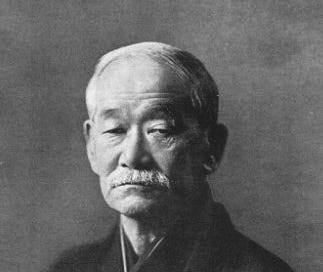



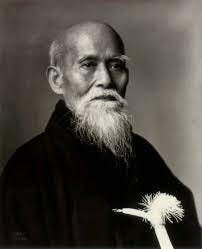

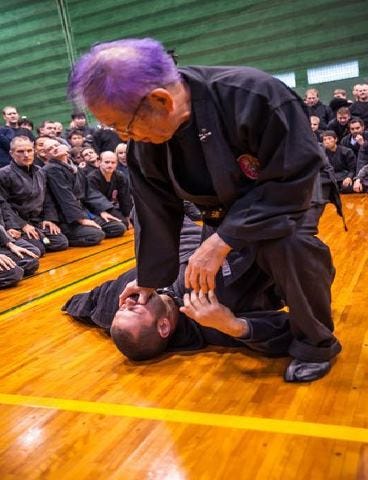
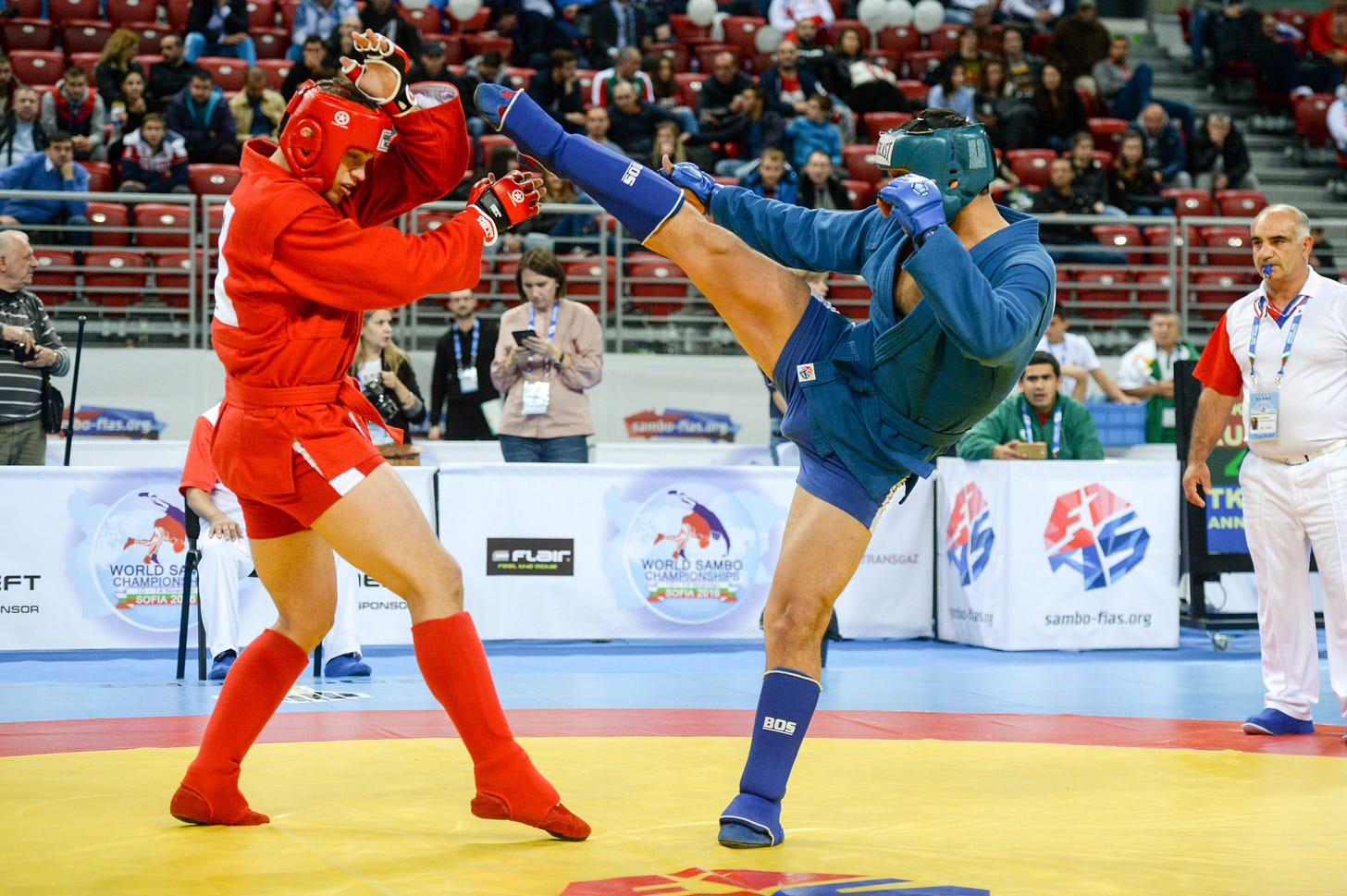
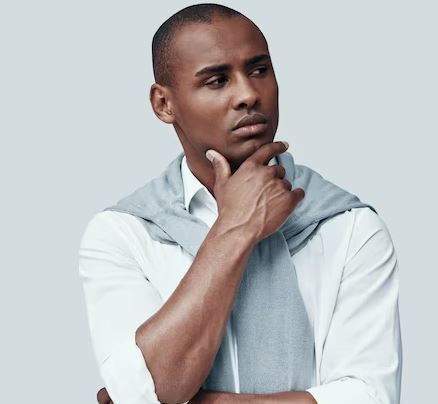
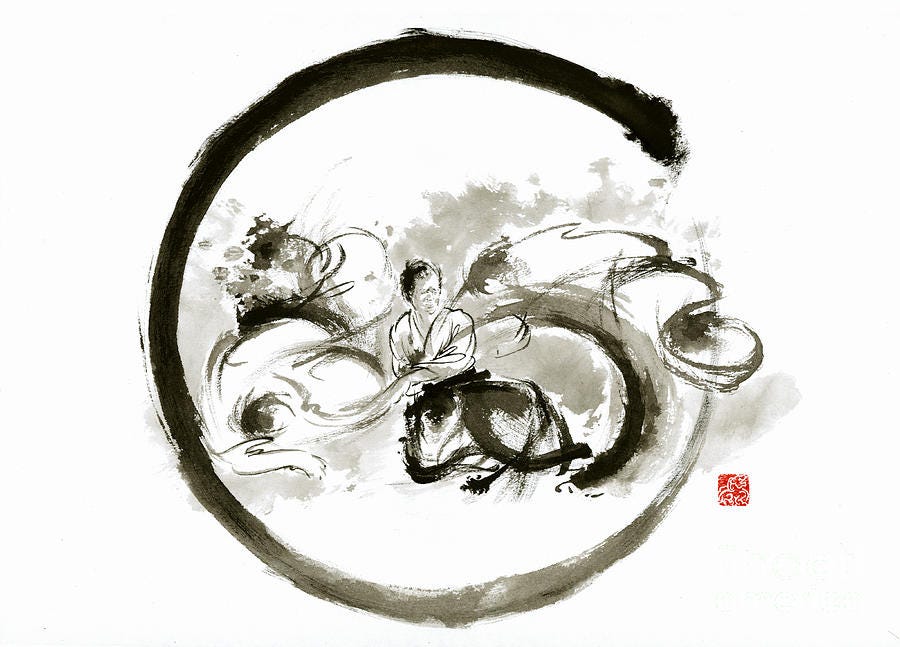
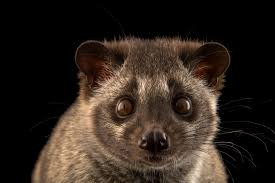
Excellent article!
I practiced Shotokan for a number of years and a bit of Judo. Can’t say I’m good but it helped in some situations 😉
A GREAT Article Julian !!
Sorry i have been too busy lately...
So i'll take some time on this important topic...
I hope you'll like it...
"THE WAY !"...
Moody Blues "The Best Way..." July 1968...
->https://www.youtube.com/watch?v=YHEsO4_Y1Ck
The Best Way To Travel...
And you can fly
High as a kite if you want to
Faster than light if you want to
Speeding through the universe
Thinking is the best way to travel
...
It's all a dream
Light passing by on the screen
And there's you and I on a beam
Speeding through the universe
Thinking is the best way to travel
...
We ride the waves
Distance is gone, will we find out
How life began, will we find out?
Speeding through the universe
Thinking is the best way to travel
...
And you can fly
High as a kite if you want to
Faster than light if you want to
Speeding through the universe
---
- "I wasn’t enlightened either. So I fail on all counts."... ?
You are wrong in essence... "I" has a body it thinks...
Zen: "When there is nobody to be enlightened, enlightenment has happened."
So first you gotta get rid of the "I", the body.
As in Zen Martial Arts: You need "Distance" from the "I-Body"...
Being Autistic, you know how to "do" that:
Hyperfocus (or "Flow") is called: "Transient Hypofrontallity", meaning: the Frontal Lobe to be temporary switched off. As we know that is where the "I" (Ego), the Will, Time, Group-think and other Social communications are located.
And yes, as you experience in Hyperfocus, or Flow there is no one doing anything. All happens, but nobody is there doing it... You just go with the flow... YOU EXPERIENCE the flow. ALL of it.
Then you have distance: From "The Outside looking in". Distance to the world, which is an illusion anyway. "A dream". Maya...
"The Eye that sees, but cannot see itself" is NOT part of the world. Wittgenstein calls it "A limit of the World". Greater distance than being outside (or at the limit or the Edge as Caitlin calls it, of) the World is not thinkable.
Here i have Robert Crumb explaining it without words...
To start klick the bottom right arrow. From there it works automatic (Java script).
->https://www.ardjoena.nl/Ardjoena/Crumb/Crumb-intro.html.
Sander